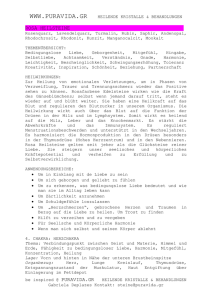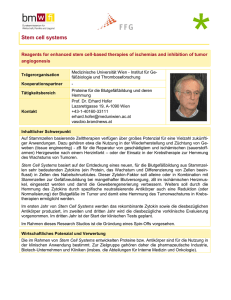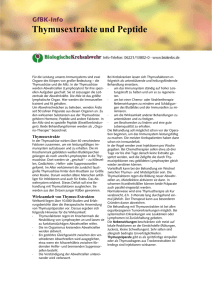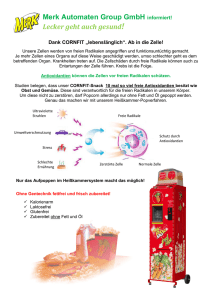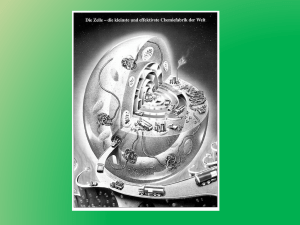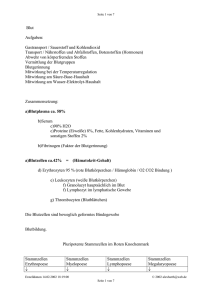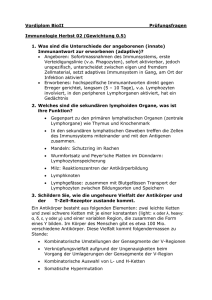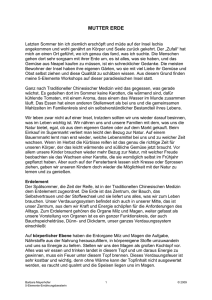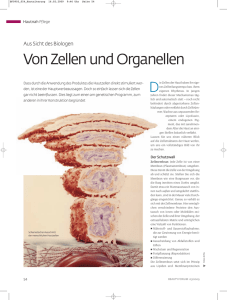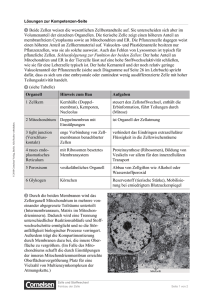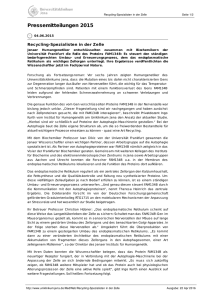John E. Upledger Im Dialog mit der Zelle - Cell Talk
Werbung
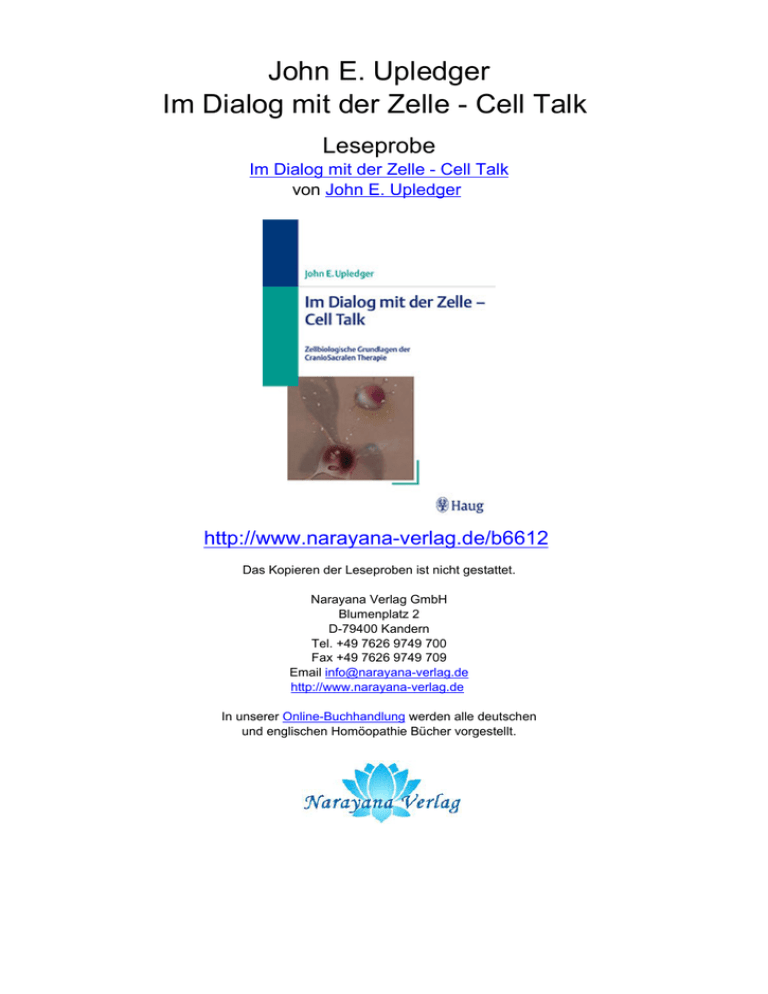
John E. Upledger Im Dialog mit der Zelle - Cell Talk Leseprobe Im Dialog mit der Zelle - Cell Talk von John E. Upledger http://www.narayana-verlag.de/b6612 Das Kopieren der Leseproben ist nicht gestattet. Narayana Verlag GmbH Blumenplatz 2 D-79400 Kandern Tel. +49 7626 9749 700 Fax +49 7626 9749 709 Email [email protected] http://www.narayana-verlag.de In unserer Online-Buchhandlung werden alle deutschen und englischen Homöopathie Bücher vorgestellt. Inhalt Geleitwort zur deutschen Ausgabe . . . . . . . . . XII Gert Groot Landeweer . . . . . . . . . . . . . . . . . . . . XII Geleitworte zur Originalausgabe . . . . . . . . . . XIV Kapitel 1: Andrew Fryer, M. D., F. A. A. P. . . . . . . . . . . . . . XIV Valerie Hunt, Ph. D. . . . . . . . . . . . . . . . . . . . . . . . XXI Vorwort . . . . . . . . . . . . . . . . . . . . . . . . . . . . . . . . XXVI Bewusstsein: Vom Mikrokosmos zum Makrokosmos Veränderte Bewusstseinszustände . . . . . . . . . . 1 Bewusstsein: Von der molekularen bis zur kosmÏischen Ebene . . . . . . . . . . . . . . . . . . 3 Die Energie des Bewusstseins . . . . . . . . . . . . . . . 5 Delfine und Bewusstsein . . . . . . . . . . . . . . . . . . 10 Kapitel 2: Zellbiologie .........1 Hellseher und Bewusstsein . . . . . . . . . . . . . . . . 13 Die Kraft der Suggestion . . . . . . . . . . . . . . . . . . . 18 Was wissen wir nun? . . . . . . . . . . . . . . . . . . . . . . 19 . . . . . . . . . . . . . . . . . . . . . . . . . . . . . . . . . . . . . . . . . . . . . . . . . . . . . . . . . . . . 20 Was sind die kleinsten lebenden Organismen? . . . . . . . . . . . . . . . . . . . . 20 Die Zelle als Modell eines lebenden Systems . . . . . . . . . . . . . . . . . . . 22 Membranen, Caveolen und Kanäle . . . . . . . . . 22 Membranen . . . . . . . . . . . . . . . . . . . . . . . . . . . 22 Caveolen . . . . . . . . . . . . . . . . . . . . . . . . . . . . . . 25 Ionenkanäle . . . . . . . . . . . . . . . . . . . . . . . . . . . 26 Proteine und Kanäle . . . . . . . . . . . . . . . . . . . . . . . 28 Export- und Importsysteme . . . . . . . . . . . . . 28 Enzyme . . . . . . . . . . . . . . . . . . . . . . . . . . . . . . . . . . 28 Zytoskelett . . . . . . . . . . . . . . . . . . . . . . . . . . . . . . . 29 Motilität von Zellen . . . . . . . . . . . . . . . . . . . . . . . 31 Intrazelluläre Transportsysteme . . . . . . . . . . . 34 Organellen . . . . . . . . . . . . . . . . . . . . . . . . . . . . . . . 36 Nukleus und Nukleolus . . . . . . . . . . . . . . . . . . . . 37 Ribosomen . . . . . . . . . . . . . . . . . . . . . . . . . . . . . . . 40 Endoplasmatisches Retikulum . . . . . . . . . . . . . 41 Golgi-Apparat . . . . . . . . . . . . . . . . . . . . . . . . . . . . 42 Vesikel: Bildung und Funktion . . . . . . . . . . . . . 43 Mitochondrien . . . . . . . . . . . . . . . . . . . . . . . . . . . . 45 Proteine . . . . . . . . . . . . . . . . . . . . . . . . . . . . . . . . . . 47 Qualitätskontrolle der Proteine durch die Zelle . . . . . . . . . . . . . . . . . . . . . . . . . 49 Herstellung und Lieferung eines transmembranösen Membranproteins: Ein Überblick . . . . . . . . . . . . . . . . . 51 Zellzyklus . . . . . . . . . . . . . . . . . . . . . . . . . . . . . . . . 53 Die somatische Zelle . . . . . . . . . . . . . . . . . . . . . . 55 Gap 1 . . . . . . . . . . . . . . . . . . . . . . . . . . . . . . . . . . 55 S-Phase . . . . . . . . . . . . . . . . . . . . . . . . . . . . . . . . 55 Gap 2 . . . . . . . . . . . . . . . . . . . . . . . . . . . . . . . . . . 57 M-Phase (Mitose) . . . . . . . . . . . . . . . . . . . . . . 57 Prophase . . . . . . . . . . . . . . . . . . . . . . . . . . . . . . 57 Metaphase . . . . . . . . . . . . . . . . . . . . . . . . . . . . . 60 Anaphase . . . . . . . . . . . . . . . . . . . . . . . . . . . . . . 61 Keimzellen . . . . . . . . . . . . . . . . . . . . . . . . . . . . . . . 62 Meiose (M-Phase für Keimzellen) . . . . . . . 63 Kapitel 3: Klinische Anwendungen . . . . . . . . . . . . . . . . . . . . . . . . . . . . . . . . . . . . . . . . . . . . 64 Dialog mit dem Gewebe: Die Anfänge . . . . . . 69 Osteopathisches College . . . . . . . . . . . . . . . . . . . 71 Die Menninger Stiftung . . . . . . . . . . . . . . . . . . . . 71 In meiner eigenen Praxis begegne ich dem Inneren Arzt . . . . . . . . . . . . . . . . . . . . . . . . . 72 Nach den Vorbereitungen . . . . . . . . . . . . . . . . . 77 VII John E. Upledger, Im Dialog mit der Zelle – Cell Talk (ISBN 3-8304-7198-x) © 2006 Haug Verlag Inhalt Kapitel 4: Das Gehirn spricht . . . . . . . . . . . . . . . . . . . . . . . . . . . . . . . . . . . . . . . . . . . . . . . . . . . . 82 Sucht . . . . . . . . . . . . . . . . . . . . . . . . . . . . . . . . . . . . 84 Amygdalae . . . . . . . . . . . . . . . . . . . . . . . . . . . . . . . 84 Anästhesie . . . . . . . . . . . . . . . . . . . . . . . . . . . . . . . 85 Arterien . . . . . . . . . . . . . . . . . . . . . . . . . . . . . . . . . . 85 Hirnschutz . . . . . . . . . . . . . . . . . . . . . . . . . . . . . . . 86 Zentrum . . . . . . . . . . . . . . . . . . . . . . . . . . . . . . . . . 87 Cerebellum . . . . . . . . . . . . . . . . . . . . . . . . . . . . . . . 89 Cortex cerebri . . . . . . . . . . . . . . . . . . . . . . . . . . . . 92 Liquor cerebrospinalis . . . . . . . . . . . . . . . . . . . . . 93 Corpus callosum . . . . . . . . . . . . . . . . . . . . . . . . . . 94 Tod . . . . . . . . . . . . . . . . . . . . . . . . . . . . . . . . . . . . . . 94 Diagnostische Bilder . . . . . . . . . . . . . . . . . . . . . . 95 Diencephalon . . . . . . . . . . . . . . . . . . . . . . . . . . . . . 95 Medikamente . . . . . . . . . . . . . . . . . . . . . . . . . . . . 95 Energie . . . . . . . . . . . . . . . . . . . . . . . . . . . . . . . . . . . 96 Os ethmoidale . . . . . . . . . . . . . . . . . . . . . . . . . . . . 96 Faszien und Muskeln . . . . . . . . . . . . . . . . . . . . . . 97 Angst . . . . . . . . . . . . . . . . . . . . . . . . . . . . . . . . . . . . 97 Fornix . . . . . . . . . . . . . . . . . . . . . . . . . . . . . . . . . . . . 97 Lobi frontales . . . . . . . . . . . . . . . . . . . . . . . . . . . . . 98 Gene . . . . . . . . . . . . . . . . . . . . . . . . . . . . . . . . . . . . . 98 Corpora geniculata . . . . . . . . . . . . . . . . . . . . . . . . 98 Glabella . . . . . . . . . . . . . . . . . . . . . . . . . . . . . . . . . . 99 Hippocampus . . . . . . . . . . . . . . . . . . . . . . . . . . . . . 99 Hypothalamus . . . . . . . . . . . . . . . . . . . . . . . . . . . 100 Das limbische System . . . . . . . . . . . . . . . . . . . . 101 Corpora mamillaria . . . . . . . . . . . . . . . . . . . . . . 101 Medulla oblongata . . . . . . . . . . . . . . . . . . . . . . . 101 Erinnerungen . . . . . . . . . . . . . . . . . . . . . . . . . . . . 103 Meningen . . . . . . . . . . . . . . . . . . . . . . . . . . . . . . . 104 Mittelhirn . . . . . . . . . . . . . . . . . . . . . . . . . . . . . . . 105 Neuronen . . . . . . . . . . . . . . . . . . . . . . . . . . . . . . . 105 Das olfaktorische System . . . . . . . . . . . . . . . . . 107 Epiphyse . . . . . . . . . . . . . . . . . . . . . . . . . . . . . . . . 107 Hypophyse . . . . . . . . . . . . . . . . . . . . . . . . . . . . . . 108 Pons . . . . . . . . . . . . . . . . . . . . . . . . . . . . . . . . . . . . 109 Aufsteigendes retikuläres aktivierendes System (ARAS) . . . . . . . . . . . . . 110 Septum pellucidum . . . . . . . . . . . . . . . . . . . . . . 113 Rückenmark . . . . . . . . . . . . . . . . . . . . . . . . . . . . . 114 Spirituelle Energie . . . . . . . . . . . . . . . . . . . . . . . 114 Thalamus . . . . . . . . . . . . . . . . . . . . . . . . . . . . . . . . 114 Trauma . . . . . . . . . . . . . . . . . . . . . . . . . . . . . . . . . . 114 Wahrheit . . . . . . . . . . . . . . . . . . . . . . . . . . . . . . . . 114 Das vagale System . . . . . . . . . . . . . . . . . . . . . . . 116 Das Ventrikelsystem des Gehirns . . . . . . . . . . 116 Kapitel 5: Dialog mit den Zellen: Die Grundlagen Knochenmark . . . . . . . . . . . . . . . . . . . . . . . . . . . 122 Stammzellen . . . . . . . . . . . . . . . . . . . . . . . . . . . . 124 Was Stammzellen tun . . . . . . . . . . . . . . . . . 126 Nischen . . . . . . . . . . . . . . . . . . . . . . . . . . . . . . 130 Haarfollikel-Nische . . . . . . . . . . . . . . . . . . . . 130 . . . . . . . . . . . . . . . . . . . . . . . . . 119 Epitheliale Stammzellen . . . . . . . . . . . . . . . 132 Neurale Stammzellen . . . . . . . . . . . . . . . . . . 132 Stammzellen und das Herz . . . . . . . . . . . . . . . 134 Stammzellen und Krebs . . . . . . . . . . . . . . . . . . 135 Kapitel 6: Das Immunsystem: Seine Zellen und Antikörper Entzündungsreaktionen . . . . . . . . . . . . . . . . . . 136 Thymusdrüse . . . . . . . . . . . . . . . . . . . . . . . . . . . . 141 Die Entwicklung der Thymusdrüse im Uterus . . . . . . . . . . . . . . . . . . . . . . . 141 Histogenese der Thymusdrüse . . . . . . . . . 143 Anatomische Übersicht der Thymusdrüse . . . . . . . . . . . . . . . . . . . . . 144 Feinstruktur der Thymusdrüse . . . . . . . . . 144 Blut- und Nervenversorgung der Thymusdrüse . . . . . . . . . . . . . . . . . . . . . 145 Funktionen der Thymusdrüse . . . . . . . . . . 145 . . . . . . . . . . . . . 136 Rückbildung der Thymusdrüse . . . . . . . . . 146 Milz . . . . . . . . . . . . . . . . . . . . . . . . . . . . . . . . . . . . . 147 Anatomie der Milz . . . . . . . . . . . . . . . . . . . . 147 Entstehung der Milz . . . . . . . . . . . . . . . . . . . 148 Mikrostruktur der Milz . . . . . . . . . . . . . . . . 148 Blutgefäße der Milz . . . . . . . . . . . . . . . . . . . 149 Arterien . . . . . . . . . . . . . . . . . . . . . . . . . . . 149 Venöse Sinus der Milz und ihr Drainagesystem . . . . . . . . . . . . . . . 150 Lymphgefäße der Milz . . . . . . . . . . . . . . . . . 150 Nerven der Milz . . . . . . . . . . . . . . . . . . . . . . . 151 VIII John E. Upledger, Im Dialog mit der Zelle – Cell Talk (ISBN 3-8304-7198-x) © 2006 Haug Verlag Inhalt Funktionen der Milz . . . . . . . . . . . . . . . . . . . 151 Lymphatisches System . . . . . . . . . . . . . . . . . . . 152 Lymphknoten . . . . . . . . . . . . . . . . . . . . . . . . . 153 Zellen und Antikörper . . . . . . . . . . . . . . . . . . . . 154 Zelluläre Komponente der Immunreaktion . . . . . . . . . . . . . . . . . . . . . . . 154 Phagozytose und Phagozyten . . . . . . . . . . 154 Dendriten, die Fast-Phagozyten . . . . . . . . 155 Monozyten . . . . . . . . . . . . . . . . . . . . . . . . . . . 155 Makrophagen . . . . . . . . . . . . . . . . . . . . . . . . . 157 Polymorphkernige Leukozyten . . . . . . . . . 160 Eosinophile . . . . . . . . . . . . . . . . . . . . . . . . . . . 161 Basophile . . . . . . . . . . . . . . . . . . . . . . . . . . . . . 162 Mastzellen . . . . . . . . . . . . . . . . . . . . . . . . . . . . 163 Nicht phagozytierende Zellen . . . . . . . . . . 165 Lymphozyten: Allgemeine Informationen . . . . . . . . . . . . . 165 T- und B-Lymphozyten . . . . . . . . . . . . . . . . 165 T-Lymphozyten . . . . . . . . . . . . . . . . . . . . . . . 167 Immunologische Synapse . . . . . . . . . . . . . . 168 B-Lymphozyten und Plasmazellen . . . . . . 169 Ansatz für eine neue Klassifizierung . . . . 170 Ein neues Konzept über die erste Verteidigungslinie . . . . . . . . . . . . . . . 170 Natürliche Killerzellen . . . . . . . . . . . . . . . . . 170 Megakaryozyten und Plättchen . . . . . . . . 172 Moleküle des Immunsystems . . . . . . . . . . . . . 173 Antigene und Antikörper . . . . . . . . . . . . . . 173 Antigene . . . . . . . . . . . . . . . . . . . . . . . . . . . 173 Antikörper . . . . . . . . . . . . . . . . . . . . . . . . . 175 IgM . . . . . . . . . . . . . . . . . . . . . . . . . . . . . . . . 175 IgG . . . . . . . . . . . . . . . . . . . . . . . . . . . . . . . . 176 IgA . . . . . . . . . . . . . . . . . . . . . . . . . . . . . . . . 176 IgD . . . . . . . . . . . . . . . . . . . . . . . . . . . . . . . . 177 IgE . . . . . . . . . . . . . . . . . . . . . . . . . . . . . . . . 177 Monoklonale Antikörper . . . . . . . . . . . . . . . 178 Verteidigungsmoleküle . . . . . . . . . . . . . . . . 178 Komplementsystem . . . . . . . . . . . . . . . . . . . . . . 178 Funktionen des Komplementsystems . . . 179 Reaktionswege des Komplementsystems . . . . . . . . . . . . . . . . . . 179 Der klassische Weg . . . . . . . . . . . . . . . . . 180 Alternativer Weg . . . . . . . . . . . . . . . . . . . 181 Immunkomplexe . . . . . . . . . . . . . . . . . . . . . . . . 182 CD-Marker . . . . . . . . . . . . . . . . . . . . . . . . . . . . . . 182 HistokompatibilitätskomplexMoleküle (MHC) . . . . . . . . . . . . . . . . . . . . . . . . . 182 Lymphokine . . . . . . . . . . . . . . . . . . . . . . . . . . . . . 182 Lymphokine mit T-zellvermittelter Immunitätsbeeinflussung . . . . . . . . . . . . . 183 Interleukine . . . . . . . . . . . . . . . . . . . . . . . . . . . . . 183 Zytotoxische Faktoren (Lymphokine) . . . 185 Koagulationsfördernde Faktoren (Lymphokine) . . . . . . . . . . . . . . . . . . . . . . . . . 185 Leukozyten migrationsinhibierender Faktor (Lymphokin) . . . . . . 185 Kolonie stimulierende Faktoren (Lymphokine) . . . . . . . . . . . . . . . . 185 Lymphokine, die B-Lymphozyten und Antikörperproduktion regulieren . . 185 Interleukine und Antikörper . . . . . . . . . . . . . . 186 Kapitel 7: Fehlfunktionen des Immunsystems Allergien . . . . . . . . . . . . . . . . . . . . . . . . . . . . . . . . 187 Autoimmunerkrankungen . . . . . . . . . . . . . . . . 188 Kapitel 8: Krebs . . . . . . . . . . . . . . . . . . . . . . . . . . . . . 187 Transplantationen . . . . . . . . . . . . . . . . . . . . . . . 189 Knochenmarkstransplantationen . . . . . . . . . 192 . . . . . . . . . . . . . . . . . . . . . . . . . . . . . . . . . . . . . . . . . . . . . . . . . . . . . . . . . . . . . . . . . . . 193 Was ist das? . . . . . . . . . . . . . . . . . . . . . . . . . . . . . 193 Interaktionen an der Grenze zwischen Tumor und Wirt . . . . . . . . . . . . . . . . 194 Metastasierung . . . . . . . . . . . . . . . . . . . . . . . . . . 195 Telomere . . . . . . . . . . . . . . . . . . . . . . . . . . . . . . . . 197 Krebs und das Immunsystem . . . . . . . . . . . . . 197 Krebs und Gehirn . . . . . . . . . . . . . . . . . . . . . . . . 198 Wie entsteht Krebs? . . . . . . . . . . . . . . . . . . . . . 200 Stammzellen und Krebs . . . . . . . . . . . . . . . . . . 206 Brustkrebs . . . . . . . . . . . . . . . . . . . . . . . . . . . . . . 207 Krebstherapie: ein Überblick . . . . . . . . . . . . . 208 Chirurgie, Chemotherapie und Bestrahlung . . . . . . . . . . . . . . . . . . . . . . 208 Den Tumor aushungern . . . . . . . . . . . . . . . . . . 209 Immunsystem und Krebs . . . . . . . . . . . . . . . . . 211 IX John E. Upledger, Im Dialog mit der Zelle – Cell Talk (ISBN 3-8304-7198-x) © 2006 Haug Verlag Inhalt Kapitel 9: Apoptose (Selbstzerstörung der Zelle) . . . . . . . . . . . . . . . . . . . . . . . . . 215 Eine persönliche Ansicht . . . . . . . . . . . . . . . . . 216 Die Wahlmöglichkeiten der Zellen . . . . . . . . 218 Mitose . . . . . . . . . . . . . . . . . . . . . . . . . . . . . . . . 218 Differenzierung/Spezialisierung . . . . . . . . 219 Apoptose . . . . . . . . . . . . . . . . . . . . . . . . . . . . . 219 Nekrose . . . . . . . . . . . . . . . . . . . . . . . . . . . . . . 219 Auslöser für Apoptose . . . . . . . . . . . . . . . . . . . . 219 Auswirkungen von Viren auf Apoptose . . . . 220 Apoptose im Herz und im Gehirn . . . . . . . . . 221 Mitochondrien und Apoptose . . . . . . . . . . . . . 221 Kapitel 10: . . . . . . . . . . . . . . . . . . . . . . . . . . . . . . . . . . . . . . . . . . 223 Soziologie der Proteine Was sind Proteine? . . . . . . . . . . . . . . . . . . . . . . 226 Was sind Aminosäuren? . . . . . . . . . . . . . . . . . . 233 Über die Funktion von Peptiden . . . . . . . . . . 235 Welche Aufgaben Proteine u. a. übernehmen . . . . . . . . . . . . . . . . . . . . . . . . 236 Epilog Persönliche Kommentare und Erfahrungen mit Proteinen . . . . . . . . . . . . . . . 238 Was sind Prionen? . . . . . . . . . . . . . . . . . . . . . . . 238 . . . . . . . . . . . . . . . . . . . . . . . . . . . . . . . . . . . . . . . . . . . . . . . . . . . . . . . . . . . . . . . . . . . . . . . . . . . . . . . . . 241 Anhang . . . . . . . . . . . . . . . . . . . . . . . . . . . . . . . . . . . . . . . . . . . . . . . . . . . . . . . . . . . . . . . . . . . . . . . . . . . . . . . 243 Bewusstsein: Paradigmen, CranioSacraler Rhythmus und therapeutische Anwendung . . . . . . . . . . . . . . 243 Ist Intention ein Plazebo? . . . . . . . . . . . . . . . . 253 Jazzimprovisationen mit dem Körper: eine CranioSacrale Heilungserfahrung . . . . . 260 Trauma: Das Gewebe erinnert sich, und die Energien nisten sich ein . . . . . . . . . . 262 Zum Verständnis der Gewebeerinnerung und ihrer Implikationen . . . . . . 267 Leben im Labor . . . . . . . . . . . . . . . . . . . . . . . . . . 272 Liquor cerebrospinalis: Was ist er und wo findet man ihn? . . . . . . . . 275 Übersicht über die Bildung und Bewegung von Körperflüssigkeiten . . . . . . . 280 Sachverzeichnis Brief von Prof. Charles Probst . . . . . . . . . . . . . 281 Forschungsarbeiten und Beobachtungen, die die Existenz eines CranioSacralen Systems belegen . . . . . . . . . . . . . . . . . . . . . . . . . 281 Magnete: Grund zum Innehalten . . . . . . . . . 305 Mitgefühl und Gewalt . . . . . . . . . . . . . . . . . . . . 307 Programm für mitfühlende Berührung – „Compassionate Touch“ der Upledger Stiftung . . . . . . . . . . . . . . . . . . . . . . . . . . . . . . . . . 309 Der Patient-Therapeut-Dialog . . . . . . . . . . . . . 311 Symptomreduzierung der akuten Belastungsreaktion bei Vietnamveteranen . . . . . . 312 Chemische Kommunikation in der Natur . . . . . . . . . . . . . . . . . . . . . . . . . . . . . 313 . . . . . . . . . . . . . . . . . . . . . . . . . . . . . . . . . . . . . . . . . . . . . . . . . . . . . . . . . . . . . . . . . . . . . 317 X John E. Upledger, Im Dialog mit der Zelle – Cell Talk (ISBN 3-8304-7198-x) © 2006 Haug Verlag John E. Upledger Im Dialog mit der Zelle - Cell Talk Zellbiologische Grundlagen der CranioSacralen Therapie 326 Seiten, geb. erschienen 2005 Mehr Homöopathie Bücher auf www.narayana-verlag.de

